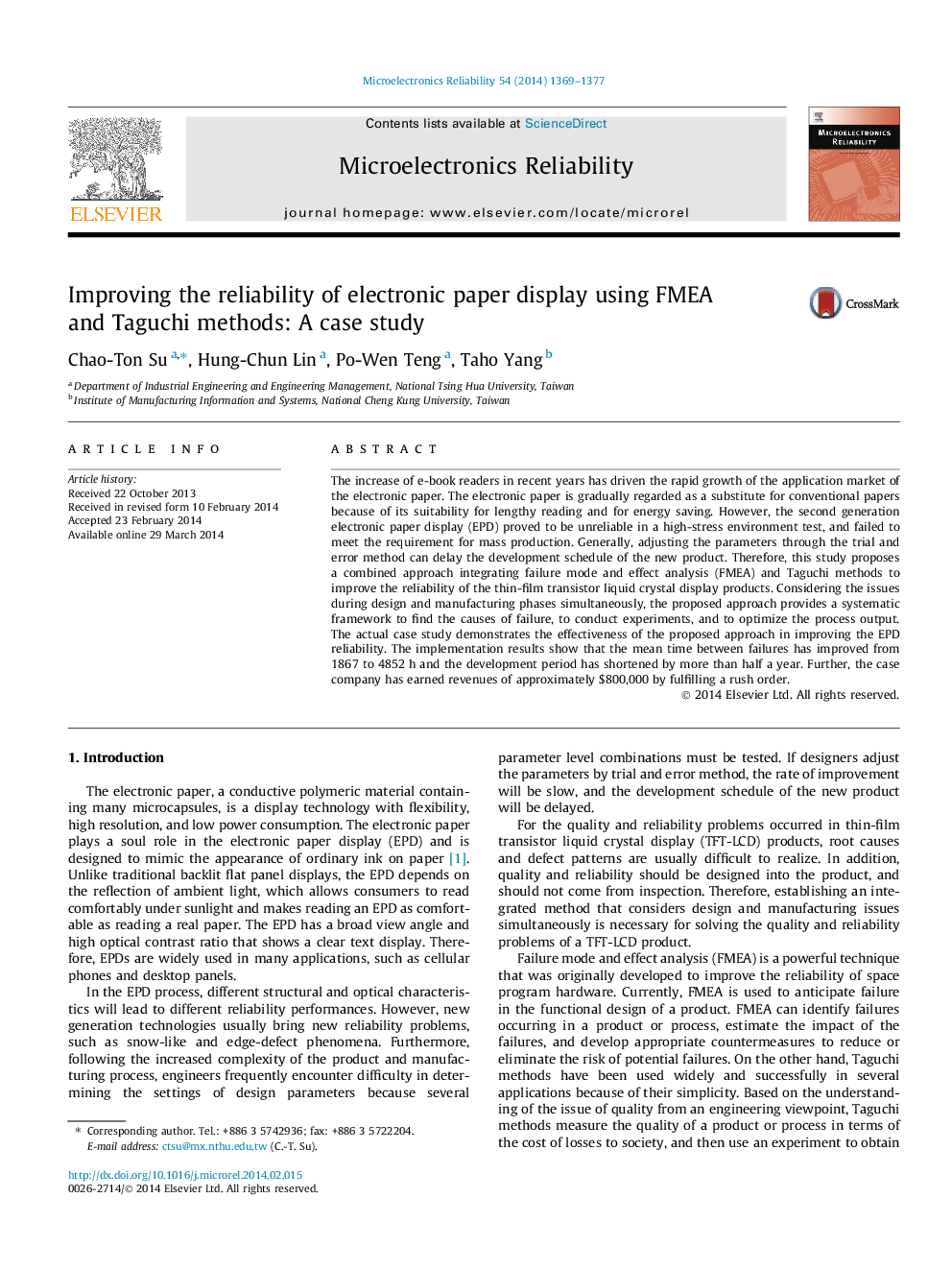| کد مقاله | کد نشریه | سال انتشار | مقاله انگلیسی | نسخه تمام متن |
|---|---|---|---|---|
| 546893 | 1450548 | 2014 | 9 صفحه PDF | دانلود رایگان |

• Considering the design and manufacturing issues simultaneously is crucial.
• A combined method integrating FMEA and Taguchi methods has been proposed.
• A real case of electronic paper display applying the proposed method was shown.
• The case company has effectively improved the MTBF from 1867 to 4852 h.
The increase of e-book readers in recent years has driven the rapid growth of the application market of the electronic paper. The electronic paper is gradually regarded as a substitute for conventional papers because of its suitability for lengthy reading and for energy saving. However, the second generation electronic paper display (EPD) proved to be unreliable in a high-stress environment test, and failed to meet the requirement for mass production. Generally, adjusting the parameters through the trial and error method can delay the development schedule of the new product. Therefore, this study proposes a combined approach integrating failure mode and effect analysis (FMEA) and Taguchi methods to improve the reliability of the thin-film transistor liquid crystal display products. Considering the issues during design and manufacturing phases simultaneously, the proposed approach provides a systematic framework to find the causes of failure, to conduct experiments, and to optimize the process output. The actual case study demonstrates the effectiveness of the proposed approach in improving the EPD reliability. The implementation results show that the mean time between failures has improved from 1867 to 4852 h and the development period has shortened by more than half a year. Further, the case company has earned revenues of approximately $800,000 by fulfilling a rush order.
Journal: Microelectronics Reliability - Volume 54, Issues 6–7, June–July 2014, Pages 1369–1377